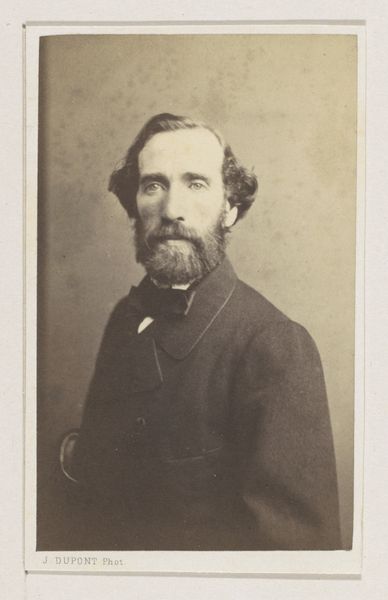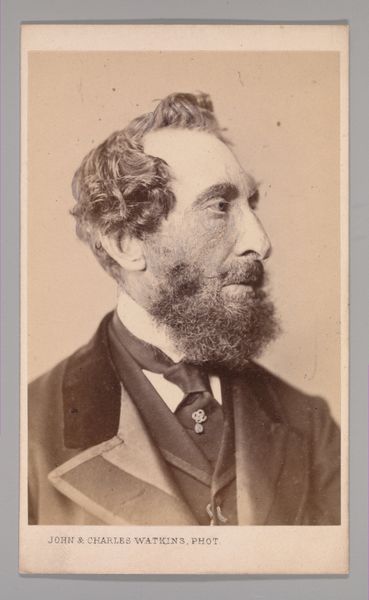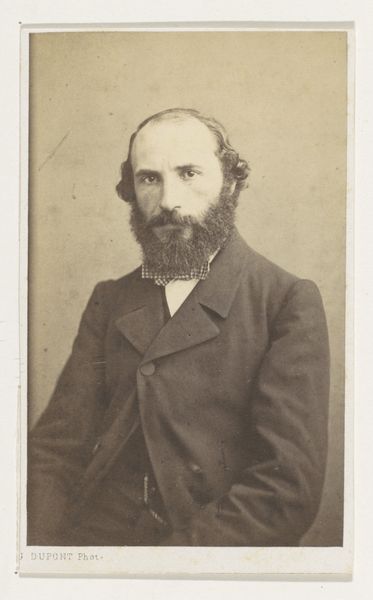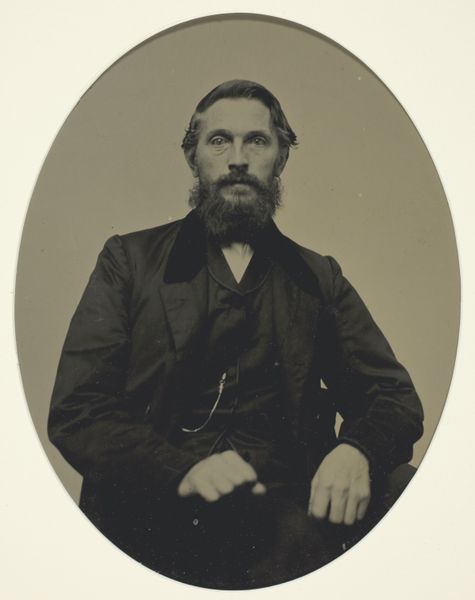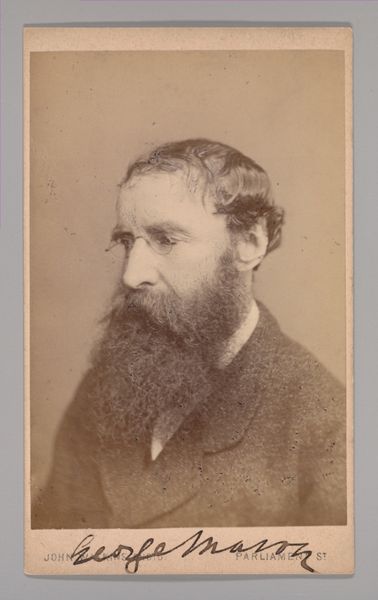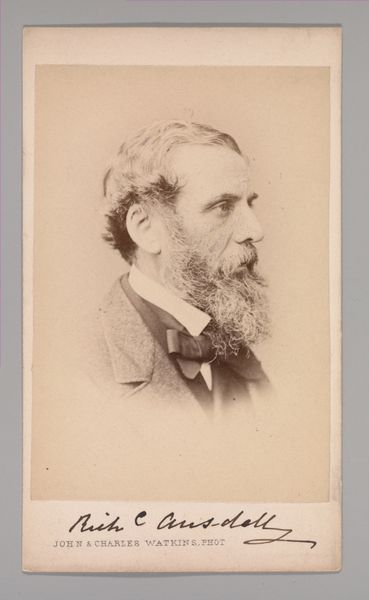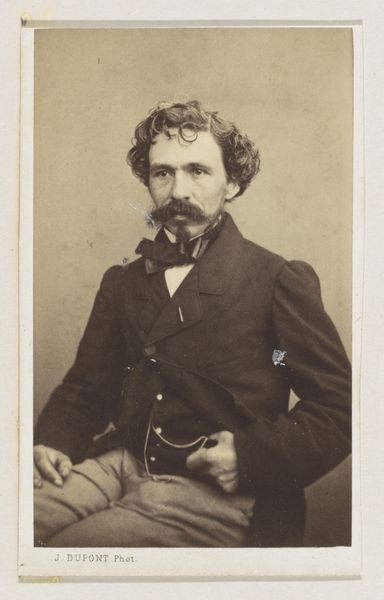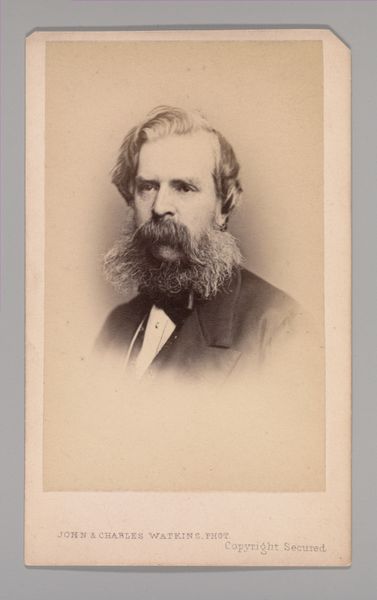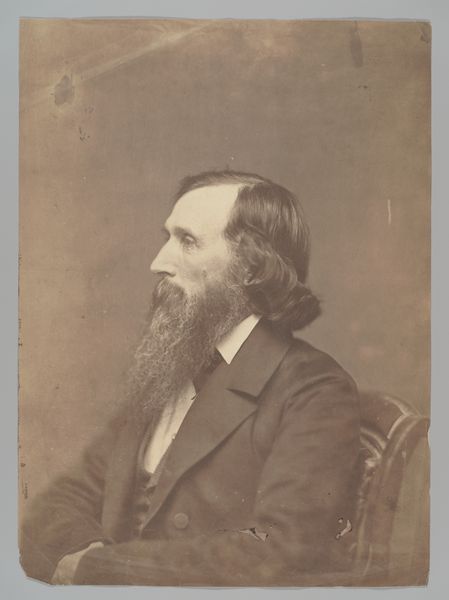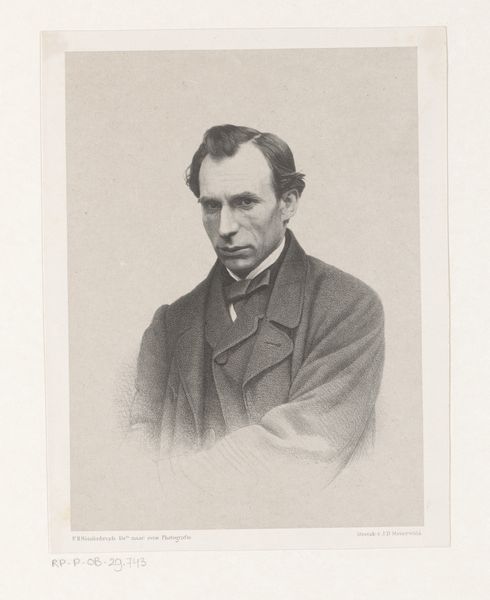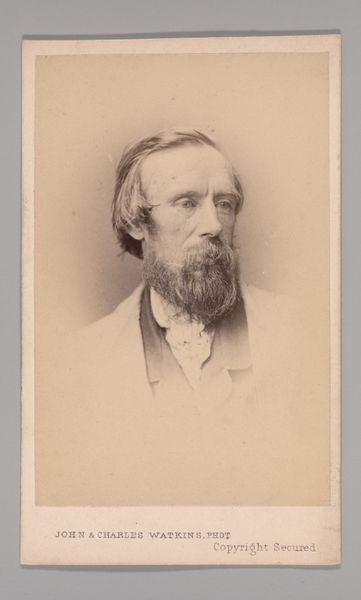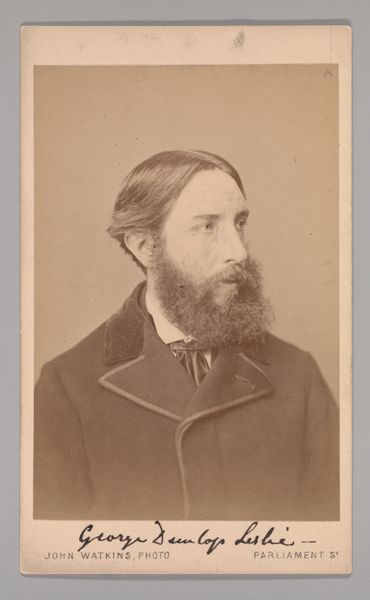
photography, gelatin-silver-print
#
portrait
#
photography
#
gelatin-silver-print
#
realism
Dimensions: height 100 mm, width 60 mm
Copyright: Rijks Museum: Open Domain
Curator: Before us we have a gelatin-silver print dating back to 1861. Joseph Dupont captured this portrait of Édouard Dujardin. Editor: There's a certain intensity to the subject's gaze; it's quite arresting. And the light, almost sepia tones, give it a strong feeling of gravitas, like a man burdened by heavy thoughts or great purpose. Curator: Dujardin was indeed a prominent figure, a novelist, and playwright associated with the Symbolist movement. Looking through that lens, we can see this image as more than just a portrait. How might this representation intersect with notions of masculinity, authorship, and the artist's role in 19th-century society? Editor: Symbolism lends itself, and certainly here, to the iconic. He presents with features exaggerated, perhaps, by photographic constraints of the time. But think about the beard—the established trope for masculine wisdom, yes, but more pointedly, an allusion here, maybe, to the prophetic beards of religious figures of the past? And note the almost aggressive formality of his dress! Curator: Absolutely, there's an element of constructed persona. In feminist theory, we consider how such portraiture often served to reinforce patriarchal structures, positioning men as the primary subjects of art and knowledge. Editor: His tie looks somewhat unkempt, intentionally perhaps, or simply, reality seeping through that careful artifice of respectability. One wonders if it symbolizes his spirit. His art breaking from the conformist demands of societal norm? Curator: Yes, precisely. The slightly disheveled attire can be interpreted as a subtle sign of rebellion, a characteristic often associated with avant-garde artists challenging societal conventions, a powerful way to read these visual cues beyond face value. Editor: Examining the work of Dupont reveals how the photographer positions Dujardin through potent symbols, both conventional and disruptive, speaking volumes about both subject and, fascinatingly, how he wants him to be viewed. Curator: Thinking about it now, perhaps, by looking closer, these early portraits gave the subject agency within visual media in an entirely new, disruptive way for its time, something which feels radical when placed within history.
Comments
No comments
Be the first to comment and join the conversation on the ultimate creative platform.
